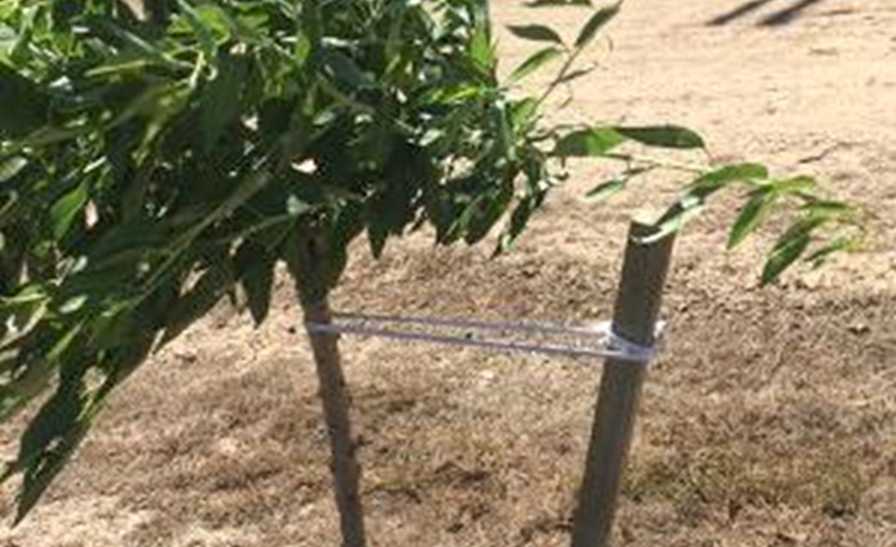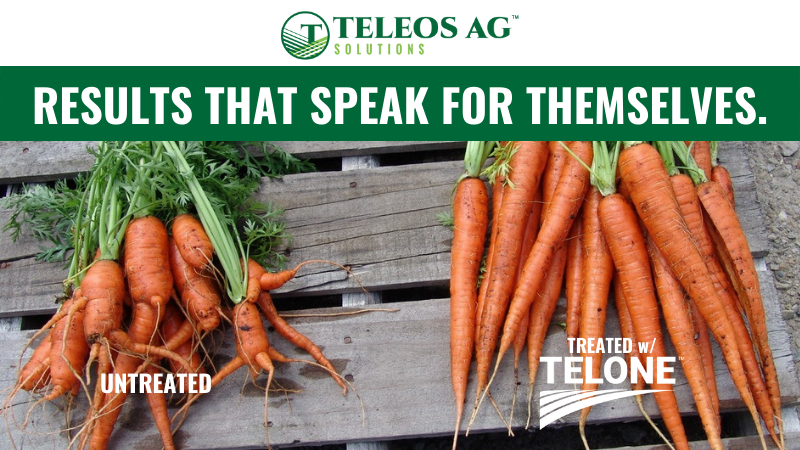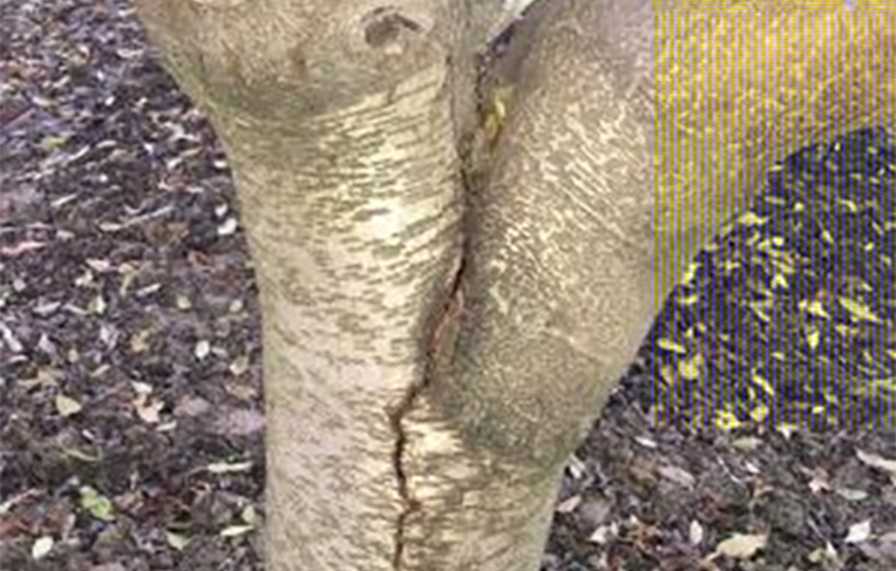How to Give Your Almond Trees the Right Support
The pending record-breaking 2020 almond crop has re-emphasized the importance of proper scaffold selection when developing almond orchards. Selection of strong primaries that are distributed evenly up and down the length of the trunk and uniformly spaced within the plane of the selections is critical to prevent splitting and breakage during the producing years, when heavy crop loads stress the branch attachments.
It is important to select primaries that are high enough to allow safe access for shaker heads, although being too high creates an imbalance of the weight of the canopy vs. the caliper of the trunk. High selections only also tend to be closely clumped together. This usually creates weaker or narrower branch angles that may not show obvious problems early in the life of the orchard but become evident as crop loads increase.
The advent of potted trees has added another dimension to this scenario. Depending on the time of planting and age of development, potted trees can sometimes come with only bud pushes on the upper trunk. There are some fields with potted trees where all scaffolds originate at 36 inches and higher.
After root establishment, if this growth is not re-directed by topping for optimum height selection and forcing of laterals, the result at the end of the growing season can be a top-heavy tree with bad branch angles that are subject to splitting.
When planting trees in the middle of the growing season, it is important to allow root establishment before any severe cutting is done to the trunk. However, in many cases laterals will not break unless forced by a heading cut.
Since most potted trees are adequately tall to allow heading and still leave room for safe shaker access, it is still possible to make late heading cuts, even after the first growing season if the tree did not develop to the grower’s satisfaction. This may mean heading a trunk that may be an inch or more in diameter, but the result will be a tree with much better scaffold selection and less subject to splitting.
This will set growth back by a year, but trees catch up rapidly and the result is still better than the splitting of weak crotches in the bearing years.












